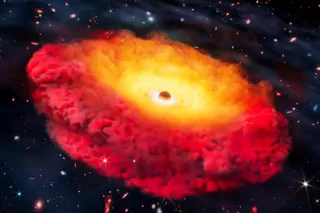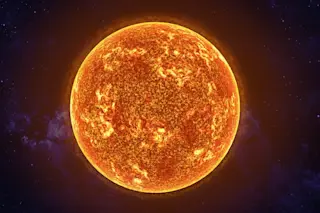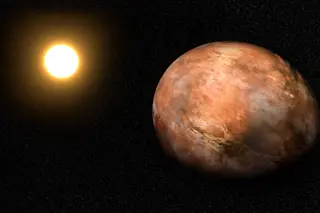The newborn planet PDS 70b (bright spot right of center). (Credit: ESO/A. Müller et al) For decades, astronomers have thought that planets form out of the rotating disks of debris that encircle most newly formed stars. Within these so-called protoplanetary disks — which can be up to 1,000 astronomical units wide (1 AU is the average Earth-Sun distance of 93 million miles) — particles of gas and dust clump together over time, slowly but surely forming larger bodies that may eventually reach planetary status. However, despite years of searching, astronomers have so-far failed to directly image a planet forming within one of these hot and chaotic disks. That is, until now. In a new study published online Monday in the journal Astronomy & Astrophysics, a team of astronomers presented the first convincing observation of a planet-sized object orbiting within the circumstellar disk of its host star — in this case, ...
Astronomers Watch The Birth Of An Alien Planet
Astronomers offer first glimpse of the newborn planet PDS 70b, confirming key planet formation theories in a protoplanetary disk.

Newsletter
Sign up for our email newsletter for the latest science news
Jake Parks
Jake Parks is a freelance science writer and editor for Discover Magazine, who covers everything from the mysteries of the cosmos to the latest in medical research.View Full Profile
More on Discover
Stay Curious
SubscribeTo The Magazine
Save up to 40% off the cover price when you subscribe to Discover magazine.
Subscribe












